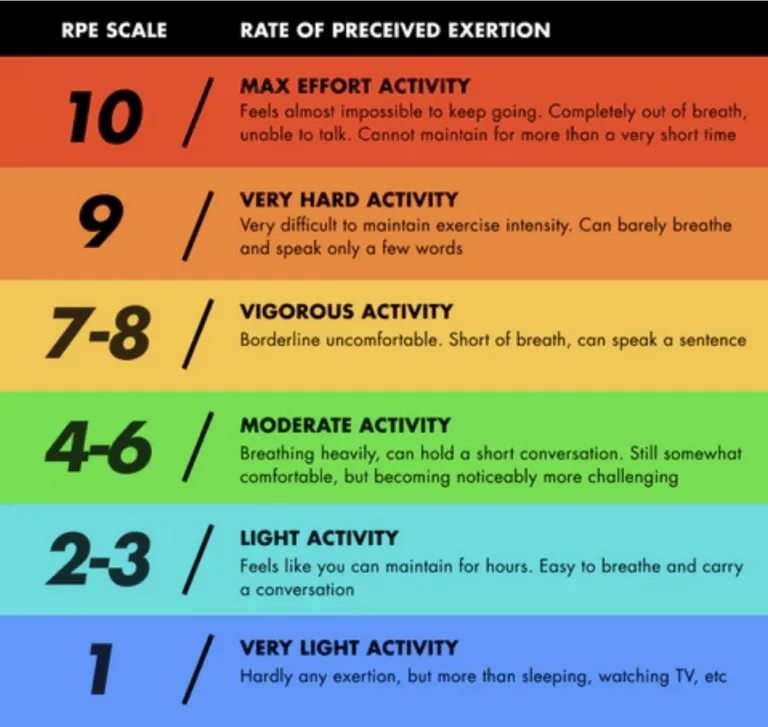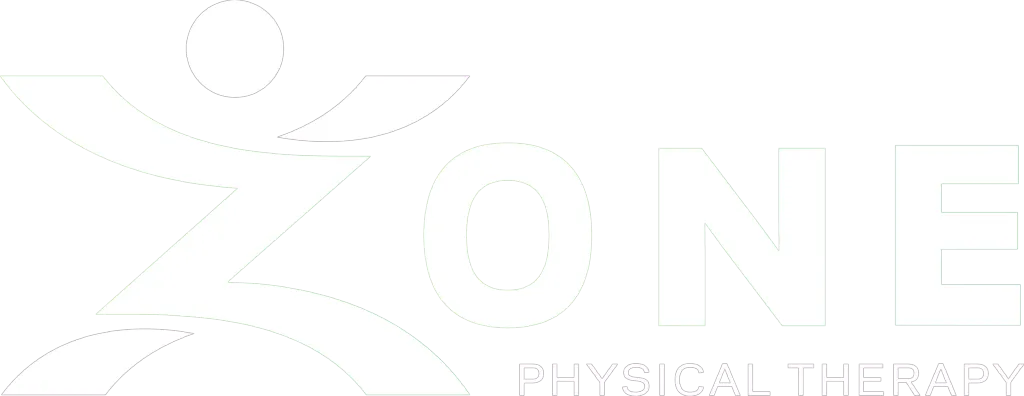Written by Christina Schultz
Last time we talked about building mileage and 3 rules of thumb for tackling this challenge safely.
This edition we’re going to dive a little into ACWR (Acute-Chronic Workload Ratio) as an extra tool you can use and/or learn from.
ACWR looks at your 7-day training load (acute) and compares it to your past 28 days of training load (chronic).
Even if you decide this is too much for you to keep up with on top of everything else, the concept is still helpful to understand when looking at your training schedule.
Terms to know
In order to start using this measure, you need to be familiar with a couple terms…
1. Rating of perceived exertion (or RPE)
This is a measure of how much effort YOU felt a certain run took on a scale of 1-10.
This can take some getting used to but can be picked up quickly and easily- and once it does is very reproducible and accurate (and frequently correlates to HR).
Besides its utility in tracking work intensity, becoming familiar with RPE is also useful in terms of being more “in tune” to your body.
RPE is a form of reflection and actively practicing using it can help you become more aware of how your body is responding and even what you are capable of.

2. Training load
Training load is a measure of the amount of stress a workout put on your body. It is calculated using this formula:
Training load = RPE x minutes of work
So if you went for a 30-minute run, and felt it was an RPE of 4, the training load would be 120
Calculating ACWR
Great! So now to calculate ACWR, take the sum of the training load of the past 7 days, and divide it by the sum of the training load from the past 28 days. Multiply by 100 to finish up with a percentage.
- 100-120% is the ideal number it should be between when building
- 120-130% is your yellow light telling you to be cautious and pay extra attention to recovery- and a down week may be a good idea soon
- >130% means let’s pump the breaks and reexamine your plan to see how we can bring this number down and why it’s gotten so high
My coaching clients have the luxury of having this math done for them in our RunDNA app making it easier for us to monitor. For everyone else, however, I do not expect you to calculate your ACWR every day after every run all year. Plus, focusing too much on the numbers can have its drawbacks.
But there are some important lessons to glean from the concept of ACWR.
Lessons from ACWR
- When deciding if you should bump up or chill out, don’t just look at how you feel that day, consider your whole training week/cycle.
- While a 10% increase from week to week is ok, make sure you are considering how much you have jumped up in the past month.
- Mileage/time are not sufficient when determining how much you should be doing- intensity HAS to be factored in.
AND REMEMBER
For both those using ACWR and those who are not:
Ultimately your body has the final say. Even if the numbers say you should be able to do a workout, and you feel like something is off that day- Listen!
Want running tips and resources sent straight to your inbox?
Sign up for our Soggy Sock Newsletter to get running-related emails sent to you every other week. Also, visit our website for our tip sheets on our runner’s checklist, favorite exercises for runners, and other free running resources!
Have you heard about our Coaching Package Promotion?
With your 3-month coaching package, we’ll include a FREE CUSTOM INSOLE (normally $249)!
A 3-month coaching package includes a start-up assessment ($100) and monthly recovery and strength sessions ($500). Call us to learn more!
About the Author: Christina Schultz
Christina Schultz graduated with a degree in exercise science from Florida Atlantic University. She was a captain for the cross country and track teams at the University. She went on to earn a Doctorate in Physical Therapy from the University of St. Augustine. While at St. Augustine, she was a head high school cross country coach and distance track coach at a local high school. During this time she became a certified strength and conditioning specialist in order to enhance her abilities to treat athletes and improve their performance.
Christina moved from Jacksonville, FL to Greer, SC with her dog Rosie to help keep our community active. She continues to run in her spare time and is enjoying exploring the city and hiking.



